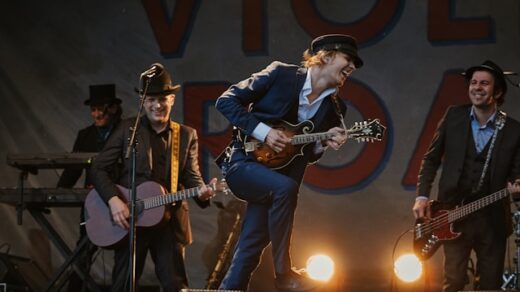The musical style is a capacious and multifaceted concept. It can be defined as a figurative unity, the totality of means of expression of artistic and ideological content through the language of music. The concept of style of music is so broad that the most begs for its specification: the term refers to different eras, genres, styles and schools, as well as to individual composers and even performers. Let’s try to understand what styles of music.
STYLE OF AN EPOCH
The concept of the style of the era focuses on the historical aspect. There are many classifications, some of which identify the largest historical eras in the development of music (Renaissance, Baroque, Classicism, modernity, etc.), while others, on the contrary, split the history of music into relatively small periods, identified earlier by other art disciplines (Romanticism, Impressionism, Modernism, etc.). A classic example of the style of the era is Baroque music, the characteristic features of which are interest in the inner world of the individual, drama, contrasting portrayal of the forces of nature, the development of opera and instrumental music (C. Monteverdi, A. Vivaldi, G.F. Handel).
GENRE STYLE
Genre style reflects the specific content, musical techniques and features of certain musical genres, which, in turn, can be classified on various grounds. Therefore, the concept of style is most appropriate for those genres, which clearly expressed the most common features. This may include genres based on folk music (various ritual songs, folk dances), church chants, and romances. If we take works of major forms (opera, oratorio, symphony, etc.), then even here the style of the genre is always clearly discernible, despite the fact that it is superimposed on the styles of the era, direction and the author’s style. But if, on the other hand, a composer invents a new genre, then it is difficult to establish the features of the genre’s style straight away – it takes time, during which other works in the same genre will emerge. This was the case, for example, with Mendelssohn’s “Songs without Words. Agree, a strange song without words, but after his 48 samples of pieces in this genre, other composers began to boldly call their pieces by the same name.
STYLE OF MUSICAL DIRECTION
The style of a musical movement echoes the style of an era in many ways: after all, some movements are regarded by musicologists as entire eras in music. But there are such areas, for which you can distinguish their peculiar only stylistic nuances. This includes the Viennese classical school (L. van Beethoven, J. Haydn, Mozart). The classical school is characterized by simplicity, expressiveness, rich harmonic language, detailed development of the theme. Speaking of what styles of music can be, it is impossible to pass by national characteristics.
NATIONAL STYLE
The basis of the national musical style is the folklore beginning. Many great composers have been inspired by folk tunes, weaving them into their creations.
COMPOSER ASSOCIATION STYLE
If the school of composers is characterized by a high degree of commonality of artistic methods, then it is logical to identify and style inherent in this school. We can talk about the styles of polyphonic schools of the Renaissance, the styles of various Italian opera schools of the XVII century or the styles of instrumental schools of the XVII-XVIII centuries.
STYLE OF AN INDIVIDUAL COMPOSER
Composer’s style is a concept that is much easier to specify, because the work of any composer is limited to a relatively small time period and certain trends of the musical era. Thus, one can recognize the music of Mozart or Rossini, for example, literally by the first bars. Naturally, a composer, like any other person, changes over the course of his life, and this affects the style of his work. But certain stylistic features remain unchanged all the same, inherent only in him, are a kind of “business card” of the author.
PERFORMING STYLE
Performing art is based on the individual manner of performance of the musician, who interprets the composer’s intention in his own way. Performing style manifests itself in the emotional coloring of the performance of the works of a particular author. Bright examples here are those composers who were also virtuoso musicians. Niccolo Paganini, who stunned listeners with his impeccable technique and unusual methods of playing the violin, and the brilliant pianist Sergei Rachmaninoff, a true knight of music, who subordinated the melodic canvas to a strict rhythmic pattern. This is what styles of music can be. This list, of course, can be supplemented by classification and on other grounds, as the world’s musical heritage is large and varied.










